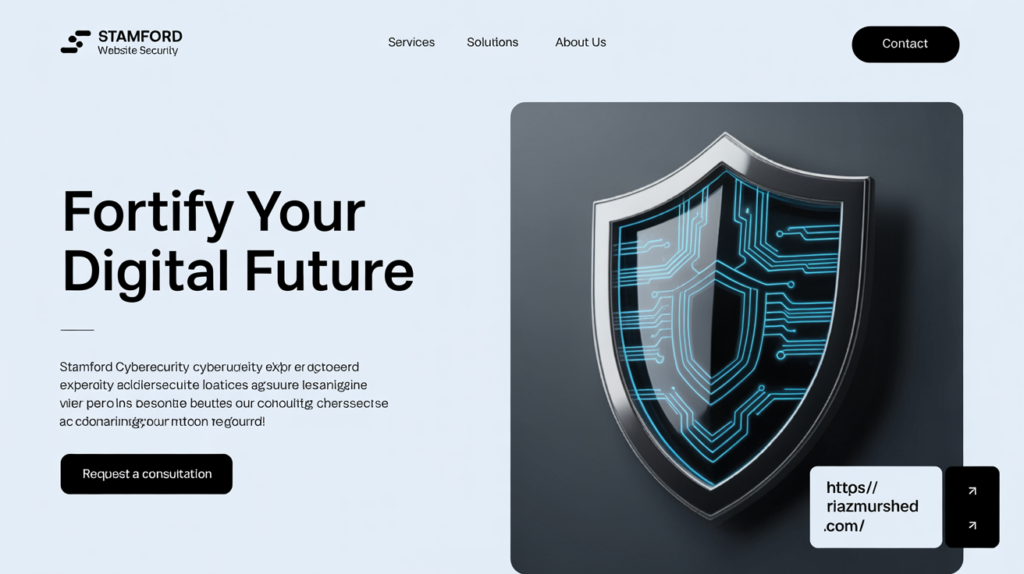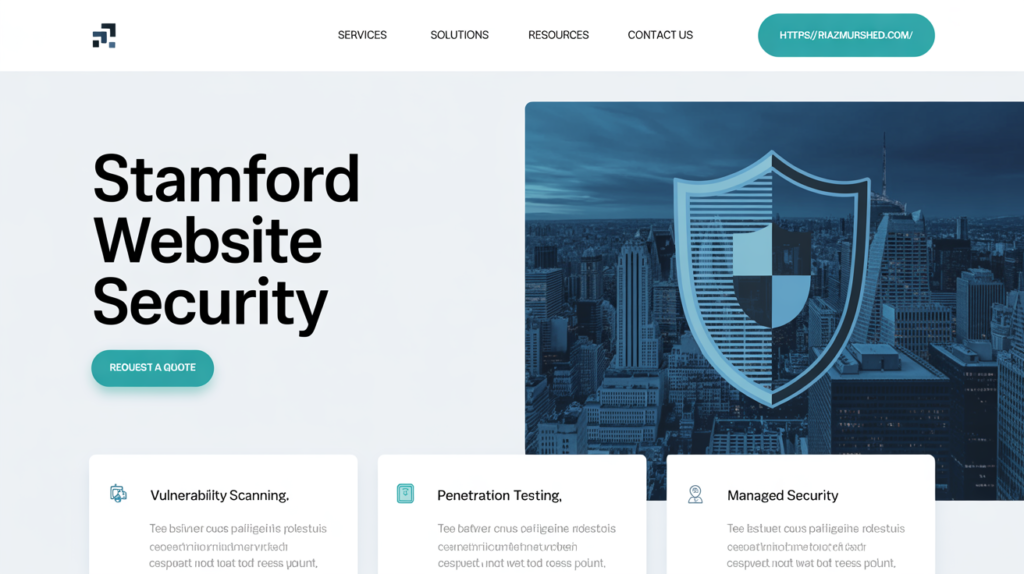Website security is no longer optional. If you run a business in Stamford, your website is more than a digital brochure. It is often the first place customers visit, the platform where sales happen, and a storehouse for sensitive information. With growing cyber risks, Stamford website security must be treated with the same seriousness as locking your office or protecting customer data in person.
In this detailed guide, we will walk through a step-by-step security checklist designed for local businesses in Stamford, UK. Each step includes examples, practical advice, and easy ways to protect your site without wasting resources.

Why Website Security Matters in Stamford
Cyberattacks are not only a global issue. Small and medium-sized businesses in Stamford face targeted risks because attackers know that local sites often lack professional protection.
- Trust factor: Customers will only engage with a website if they feel safe sharing details.
- Legal requirements: Data protection laws in the UK make website owners responsible for customer information.
- Reputation: One breach can damage your business name for years.
Think of Stamford website security as digital insurance. It reduces risk, saves money, and protects your hard work.
A Practical Website Security Checklist
1. Use Strong Hosting with Security Features
Cheap hosting might save money upfront, but weak servers are an easy target. Choose a Stamford-friendly hosting provider that offers:
- Daily backups
- Firewalls
- Malware scanning
Example: A local retailer in Stamford lost access to their website after a malware injection. Their host offered no backups, forcing them to rebuild from scratch. Reliable hosting with built-in protection could have prevented this.
2. Keep Software Updated
Outdated plugins, themes, and content management systems are common entry points. Make sure:
- Updates are applied as soon as they are released.
- Plugins are downloaded only from trusted sources.
3. Secure Your Login Pages
Weak passwords remain the simplest attack path. To improve security:
- Create long, unique passwords.
- Add two-factor authentication.
- Limit login attempts to block repeated guesses.
4. Install an SSL Certificate
Visitors should always see the small padlock next to your web address. SSL encrypts data between your website and the user. Search engines also use it as a ranking signal.
Example: A café website in Stamford used contact forms without SSL. Customers received warnings from browsers, leading to fewer online orders. After SSL was installed, trust and traffic increased.
5. Regular Backups
Backups are your last line of defense. Store them off-site and test recovery often. Daily or weekly backups help recover quickly after an attack.
6. Protect Against Malware and Viruses
Install reliable website security tools that scan for malicious files. Automation can catch problems before they spread.
7. Monitor User Roles
Not every team member needs admin rights. Restrict access levels to avoid mistakes or misuse.
8. Use a Web Application Firewall (WAF)
A WAF filters harmful traffic before it reaches your site. It blocks hacking attempts like SQL injections or cross-site scripting.
9. Regular Security Audits
Perform quarterly checks to identify weak spots. Local IT services in Stamford can help with technical testing.
10. Educate Your Staff
Human error is often the biggest risk. Train employees on safe login practices, email awareness, and phishing prevention.

Local Focus: Stamford Website Security Risks
Businesses in Stamford face some unique challenges:
- Tourism sites: Increased traffic makes them attractive to spammers.
- Small retailers: Often handle payments but lack security staff.
- Local services: Depend heavily on reputation, so a single data leak hurts more.
By applying the checklist above, Stamford businesses can avoid common mistakes and keep both their brand and their customers safe.
Advanced Measures for Larger Stamford Businesses
If your business handles sensitive data, additional steps may be necessary:
- Dedicated servers: Prevent risks from shared hosting.
- Security monitoring services: Provide 24/7 detection.
- Incident response plans: Define steps in case of a breach.
Practical Example: A Stamford Business Case Study
A law firm in Stamford noticed suspicious login attempts. Their hosting provider flagged the activity but had limited support. After applying stronger passwords, a firewall, and routine monitoring, the attempts stopped. The firm then added an SSL certificate and regular backups, giving them peace of mind and client trust.
Frequently Asked Questions (FAQ)
Q1: Why is Stamford website security different from general security advice?
A: Local businesses often face targeted risks because attackers know smaller sites may lack professional protection.
Q2: How often should I back up my website?
A: At least weekly, but daily is recommended for e-commerce or active sites.
Q3: Do I really need SSL if I do not sell products online?
A: Yes. SSL protects contact forms and builds customer trust.
Q4: How do I know if my site has been hacked?
A: Signs include slow performance, unwanted ads, or search engine warnings. Regular scans help catch issues early.
Q5: What if I cannot manage all this myself?
A: Consider hiring local Stamford IT professionals who specialize in website protection and maintenance.
Conclusion
Website security should not feel overwhelming. By following this practical Stamford website security checklist, you can protect your site, maintain customer trust, and avoid costly disruptions. The key is consistency: update often, back up regularly, and review your protections every few months.
Your website is part of your business identity in Stamford. Protecting it today means saving yourself from bigger problems tomorrow.


